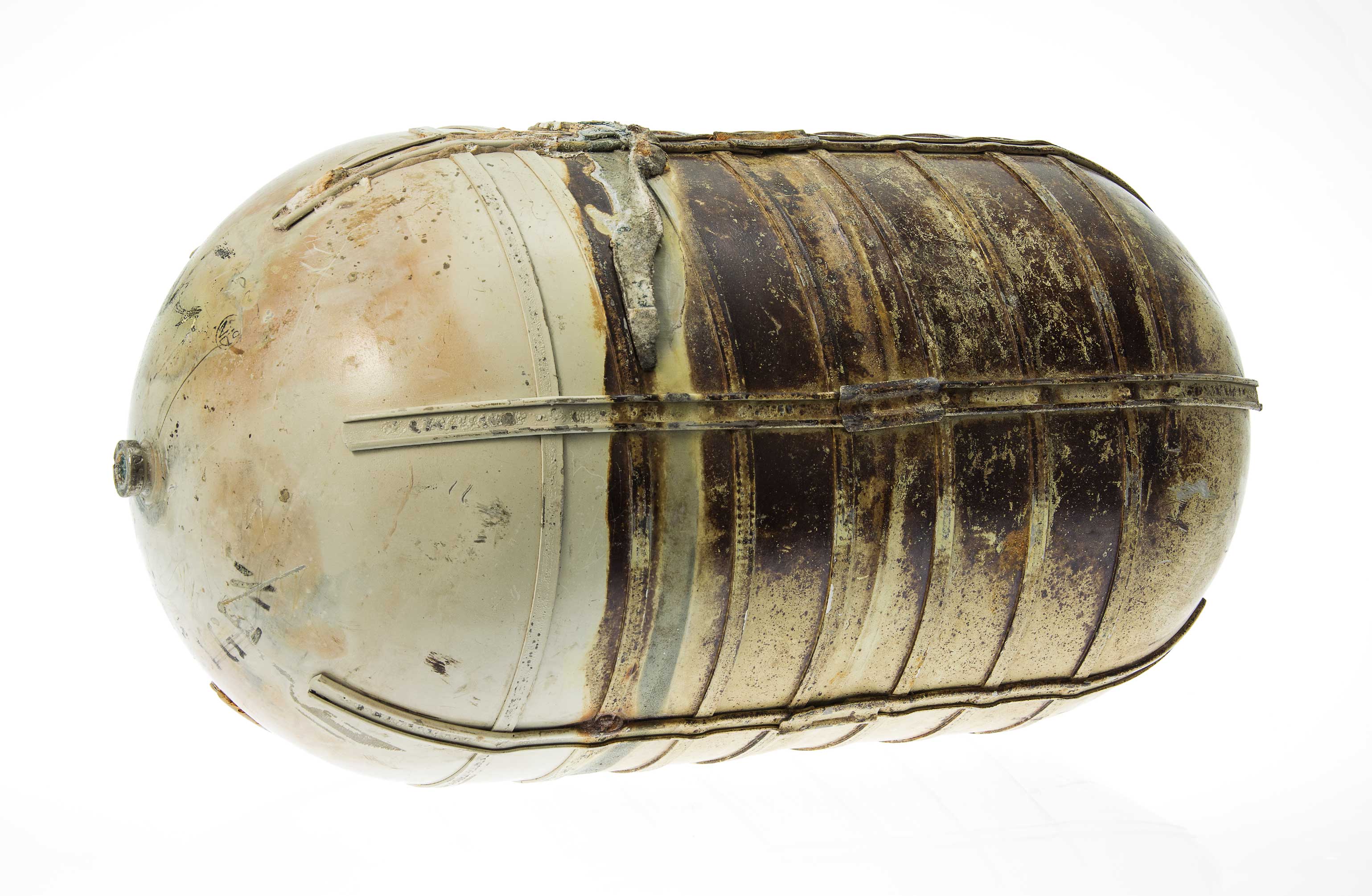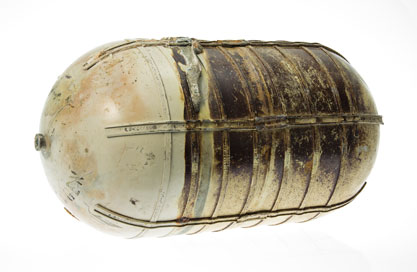B29 Superfortress Oxygen Tank
Metal
Circa 1948
L 22.0", D 39" circumference
Lake Mead National Recreation Area, LAKE 16160
See more
Hide this content
This oxygen tank comes from the wreckage of a B-29 Superfortress that crashed into the Overton Arm of Lake Mead on July 21, 1948. The B-29 Superfortress was a holdover from WWII and the air war against Japan. The plane was the most advanced aircraft of its day, featuring a pressurized crew compartment, a ten-bomb load, and a 3,250 mile range. After the war, B-29s were used to gather scientific information that could be used for military purposes during the Cold War. This B-29 crashed while conducting atmospheric research. Upon impact with the lake, three of the four engines tore off and the plane skipped like a stone for more than a quarter of a mile before sinking.
In 2003, archaeologists from the National Park Service Submerged Resources Center mapped and documented the wreck for management and educational purposes.
References
National Park Service
http://www.nps.gov/lake/historyculture/b29bomber.htm



B29 Superfortress Oxygen Tank
Metal
Circa 1948.
L 22.0", D 39" circumference
Lake Mead National Recreation Area, LAKE 16160
See more
Hide this content
This oxygen tank comes from the wreckage of a B-29 Superfortress that crashed into the Overton Arm of Lake Mead on July 21, 1948. The B-29 Superfortress was a holdover from WWII and the air war against Japan. The plane was the most advanced aircraft of its day, featuring a pressurized crew compartment, a ten-bomb load, and a 3,250 mile range. After the war, B-29s were used to gather scientific information that could be used for military purposes during the Cold War. This B-29 crashed while conducting atmospheric research. Upon impact with the lake, three of the four engines tore off and the plane skipped like a stone for more than a quarter of a mile before sinking.
In 2003, archaeologists from the National Park Service Submerged Resources Center mapped and documented the wreck for management and educational purposes.
References
National Park Service
http://www.nps.gov/lake/historyculture/b29bomber.htm







